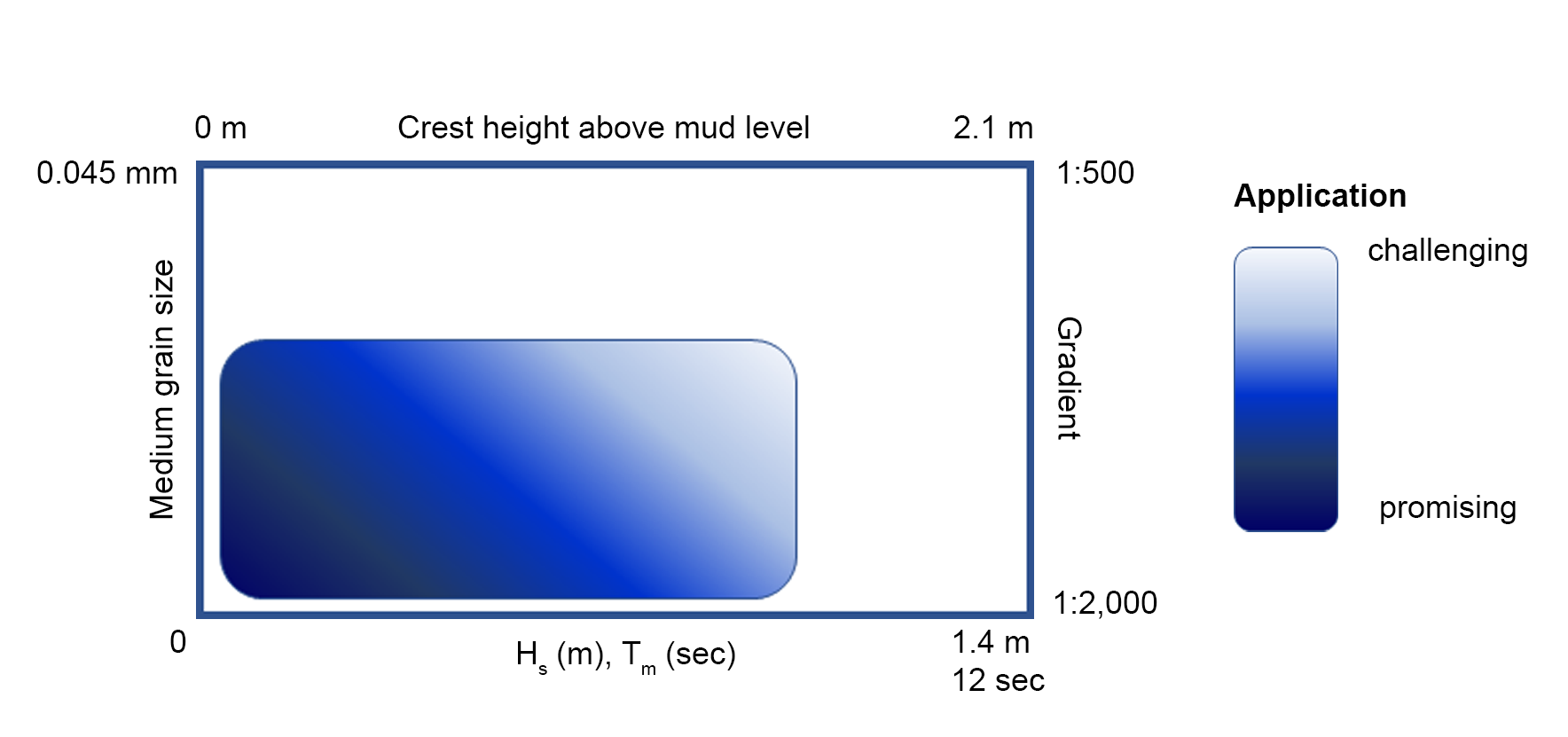

Les modèles physiques déterminent la conception optimale des brise-lames actuels. La résistance des poteaux en bambou a été testée lors des essais sur le terrain des clôtures. Les informations relatives à la durabilité du bambou proviennent de l'expérience de l'utilisation du bambou en Thaïlande. La population locale est informée de l'activité prévue et y participe. Avec un soutien technique, la population locale construit des brise-lames, c'est-à-dire des clôtures en forme de T à partir de matériaux naturels (bambou). Les clôtures en T perméables n'empêchent pas l'apport de sédiments et créent des conditions d'eau calme pour le dépôt de sédiments. Les parties longshore brisent les vagues et les éléments crossshore capturent les sédiments en suspension dans les courants longshore. Les brèches dans les parties longshore améliorent l'apport de sédiments dans les champs créés par les clôtures à marée montante, tandis que le drainage est accéléré par les ouvertures à marée descendante, ce qui accélère le processus de consolidation du sol dans les champs.
La réussite de la conception et de la construction dépend des résultats de la modélisation numérique, des observations de l'évolution du trait de côte, des relevés d'érosion et de la bonne exécution de la construction de la clôture en T et de la supervision de la construction.
Les conditions suivantes doivent être remplies pour garantir l'efficacité des clôtures :
- Environnement vaseux ; diamètre moyen de la couche supérieure de la vase d50 < 0,03 mm
- Hauteur significative de la vague Hs < 0,90 m
- Période moyenne des vagues Tm < 8 s
- Faible pente de l'estran < 1:1000
- Hauteur libre de la crête de la construction < 1,40 m
L'implication des services techniques, des autorités locales et de la population dans le processus de planification, de conception et de construction était importante pour garantir l'acceptation, le soutien, l'engagement à long terme et l'appropriation. Le moyen le plus efficace de restaurer les estrans érodés est d'utiliser des clôtures en T perméables qui créent des conditions d'eau calme pour le dépôt des sédiments et réduisent l'érosion. La construction des clôtures en T doit respecter des normes de qualité et être bien supervisée. Cette approche rentable ne sera réalisable que dans un ensemble spécifique de conditions limites (voir le graphique ci-dessous). Si ces critères limitatifs ne sont dépassés que dans une faible mesure, des adaptations telles que le renforcement de la clôture avec des poteaux en béton doivent être envisagées. Si les critères limites sont largement dépassés, l'utilisation de clôtures en T n'est pas possible. D'autres facteurs à prendre en compte sont l'emplacement des clôtures pour minimiser l'érosion sous le vent, ainsi que la proximité du littoral et la durée des périodes d'immersion pour minimiser les dommages causés par les tarets. La durée de submersion et l'exposition aux vagues influencent également l'effort requis pour l'entretien.